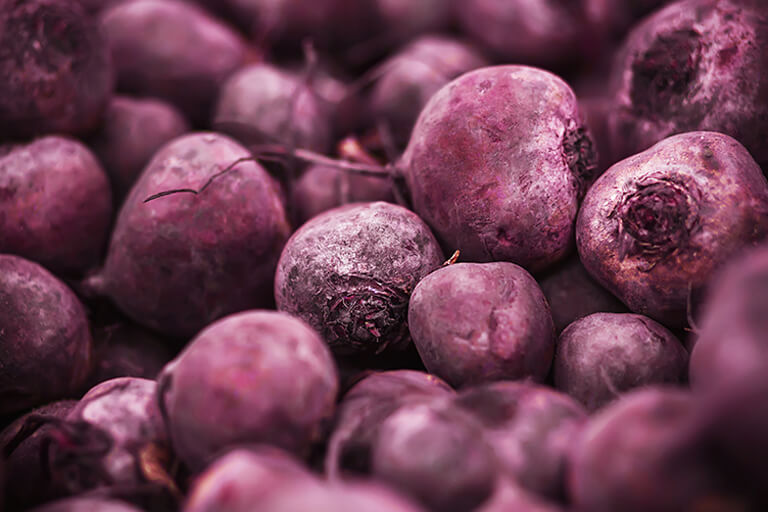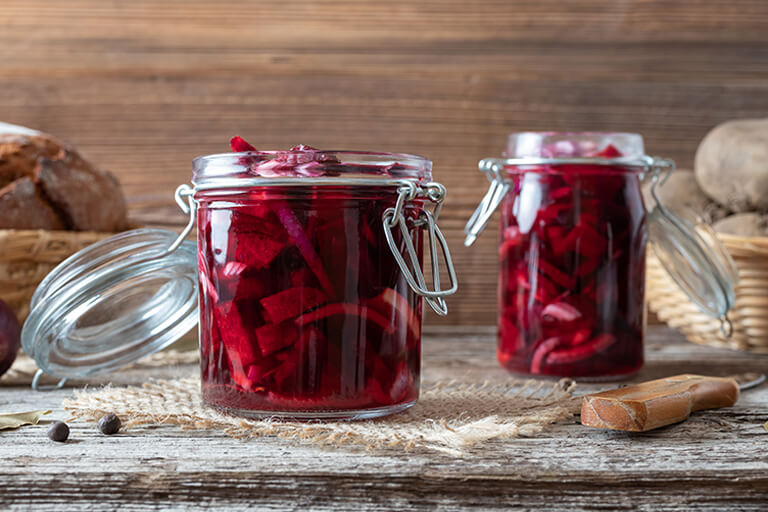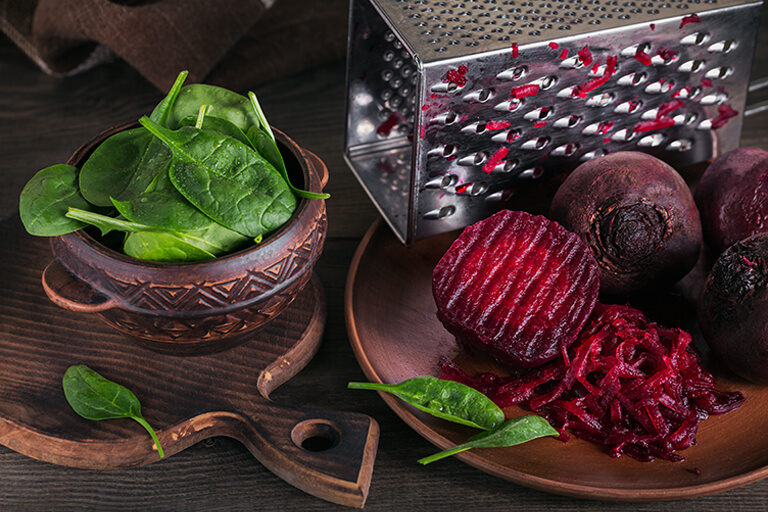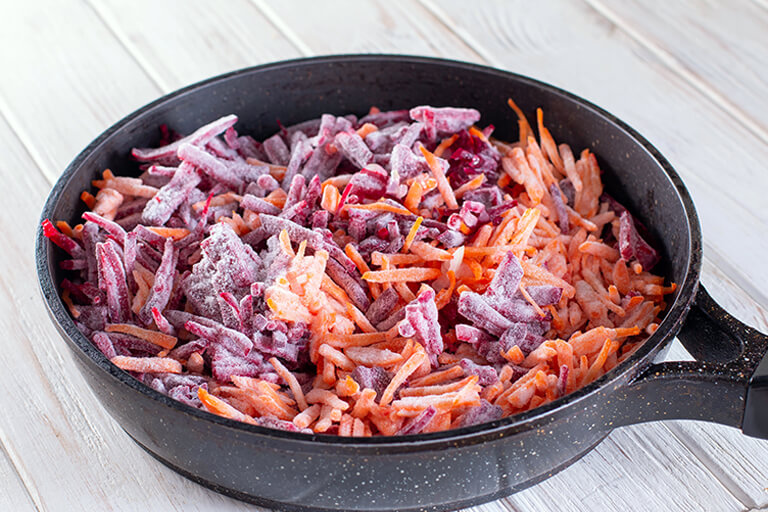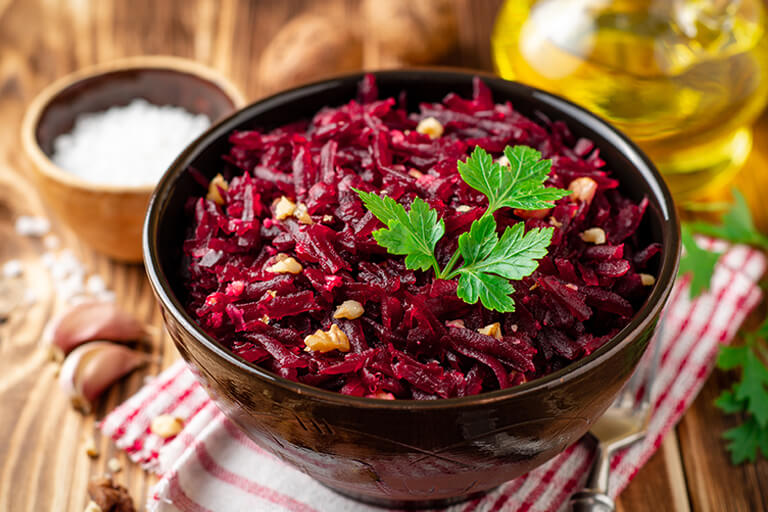Vibrantly colored red or gold beetroots have been farmed everywhere from the ancient Mediterranean to George Washington’s Mount Vernon. In modern times, hybrid species of beets even feature red and white stripes like a candy-cane. All colors of beetroot have the same rich, earthy taste and liven up the plate with their rainbow hues.
Beet leaves and roots are packed with nutrition, including antioxidants that fight cell damage and reduce the risk of heart disease. They’re one of the few vegetables that contain betalains, a powerful antioxidant that gives beets their vibrant color. Betalains reduce inflammation and may help protect against cancer and other diseases.

